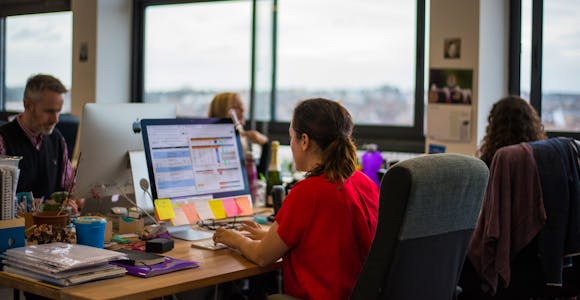Leading By Example

‘Getting our house in order’ means addressing what Swoop buys, how we travel and how we run our offices. We’ll keep reporting on our progress and aim to bring everyone who …
Discover MoreOur world is already experiencing some of the impacts of climate change and the science is clear: if we don’t curb our carbon emissions fast, we’re heading for a climate crisis. The tourism industry is responsible for 8% of CO2 emissions (1). Air travel only accounts for around 2% of global emissions. For those who fly, it is often the single biggest source of personal emissions, and a large percentage of emissions come from a relatively small group of people who fly often.
This part of our sustainability strategy is all about reducing our carbon impact. Below, we’ll explain what we’re already doing to reduce and offset the emissions we’re responsible for (which includes those created by our customers’ trips with us), and describe how we aim to become increasingly sustainable into the future.


At Swoop, we love to explore the great outdoors – it’s why we do what we do. This raises some extremely challenging questions about travelling, including whether it’s even acceptable to fly in the context of the climate crisis.
While we wrestle with these big ethical questions, we continue to send our customers to places that are near-impossible to reach without flying, creating tons and tons of carbon emissions. Swoop is at the start of our sustainability journey and we still have a long way to go. We have started to make some small but important steps towards reducing our carbon impact.
We’re also offsetting the emissions we and our customers produce by supporting projects that reduce carbon emissions and deliver wider environmental and social benefits. We accept there are criticisms of offsetting and have therefore carefully chosen those projects with the highest accreditation.
“We are reassured that our customers often return from one of our destinations with a strong desire to preserve them. As David Attenborough puts it, travel is important because the more we see of the world, the more we want to protect it. Our job now is to amplify these huge benefits of travel while reducing its more challenging impacts.” - Luke Errington, Founder & Managing Director of Swoop


By May 2023, Swoop aims to:

Reducing our emissions

Offsetting our emissions

Offsetting our emissions means investing in climate protection projects that remove an equivalent amount of emissions from the atmosphere. For example, if we emit 10 tonnes of CO2, we can offset that by investing in a project (like those described below) that prevents a separate 10 tonnes from being emitted in the future.

One of the issues with offsetting is that the calculation of impact is often too low. To make sure we avoid this, our independent consultancy takes two important factors into account:
We’ve chosen two projects to support - both of which are certified by Gold Standard (an independent certification body set up by WWF and other NGOs in 2003).

EnKing International
This project has brought state-of-the-art solar thermal power to Rajasthan in India. By supplying 118,866 MWh net electricity to the grid per year, this new source of clean energy is on track to avoid the emission of 113,160 tonnes of CO2 per year.The project also supports social improvements in the region, such as supplying hospitals and health centres with air-conditioning and solar-powered lighting and distributing rooftop solar panels in villages that are not connected to the grid.
Photo: EnKing International

This project is located in the southwest of Henan Province, one of the poorer regions of China. Our funding will support the project to distribute and install 48,000 solar cookers to rural households, replacing traditional, inefficient coal-fired cooking stoves and avoiding up to 93,962 tonnes of emissions every year. As well as reducing the use of coal for cooking, these stoves greatly improve indoor air quality, benefiting the health of residents. The solar power generates enough heat to cook the local staple food of rice and the stoves’ design is ideal for the region’s sunny climate.
Photo: China Carbon NV

‘Getting our house in order’ means addressing what Swoop buys, how we travel and how we run our offices. We’ll keep reporting on our progress and aim to bring everyone who …
Discover More
The things we choose to buy, use and do have an impact on the environment. We’re starting by helping our customers reduce their impact.
Discover More
These pages tell the story of our commitment to sustainability and our promise to you, our customers, to protect this planet and its most precious places.
Discover More